I’ve read that the French have no good expression to say “I’m excited about….” A direct translation “Je suis excitée” would more often be understood as talking about physical arousal—not appropriate. This vocabulary gap is most unfortunate because they would have no way to tell you about how happy I am that there will be an in-person Celebration this year. There’s a link below for an interesting article exploring the different cultural outlooks behind this linguistic issue, but don’t go there yet; we’ve got quilt-related things to talk about.
Celebration is going to be pared down—no meal events, social distancing arrangements, etc.—but it’s happening. Yippee! You may remember that I wrote about taking part in the nomination process for our 2021 Heritage Honoree, Mary Gasperik; I’m super excited now to see her inducted. I have seen some of her quilts in person, and I’m looking forward to seeing more. She made one masterpiece that was on display in the Smithsonian for a year, and I hope that one comes to visit at the Hall of Fame. You can get a preview of her work on the Quilt Index; but it would be better if you can come to Marion and see the real things. (Link below.)
We’ll also be inducting Marti Michell whose acrylic templates have made it possible for me to attempt a Seven Sisters quilt (no photo; I said “possible”, not “done”), and recognizing the Lutheran World Relief for their charitable work. No live auctions, but there will be small lectures. As excited as I am about the inductions, it’s a toss-up whether I’m more excited about seeing quilting friends. This will be the first non-Zoom, live get-together I’ve had in almost a year and a half, and I know most of you are in the same position. Come if you can and we’ll have a great time. Stay tuned for more details on the website.
We’re having some pretty nice weather here in the Chicago suburbs, and I’ve been out in the gardens. Maybe I can post some photos when things start blooming. In the meantime, how about looking at some flowering quilts? We can tiptoe through the many variations of tulips and then see what else I can find.
First, let’s see some real tulips. These photos are taken from the backyard of the Quilters Hall of Fame Museum which operates at what once was the home of Honoree Marie Webster. According to her granddaughter Rosalind Perry, Marie loved gardens and many of the quilt patterns she sold were floral designs.
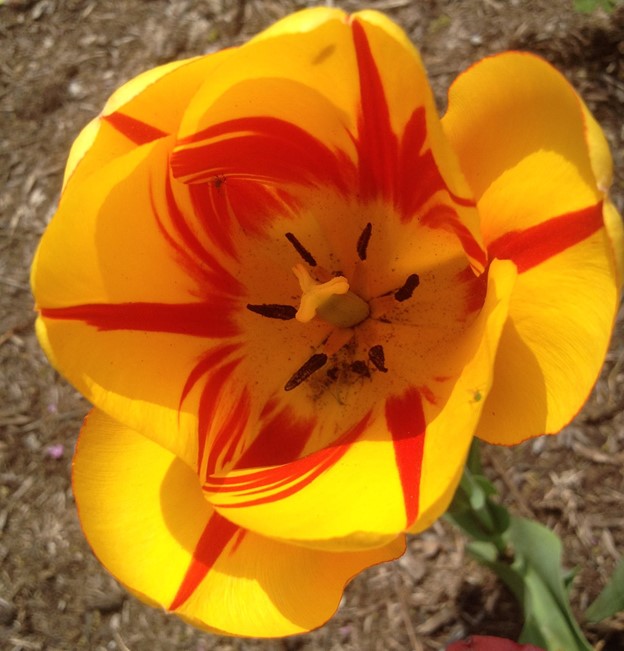
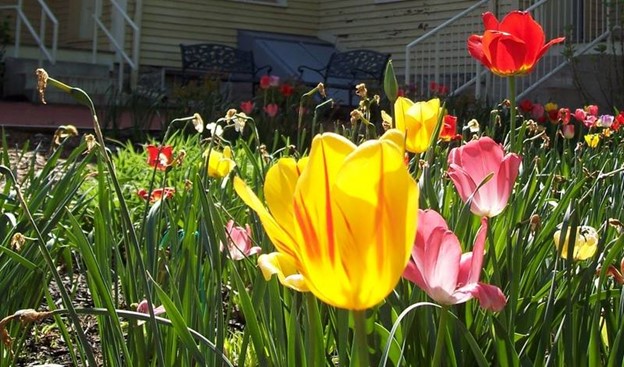
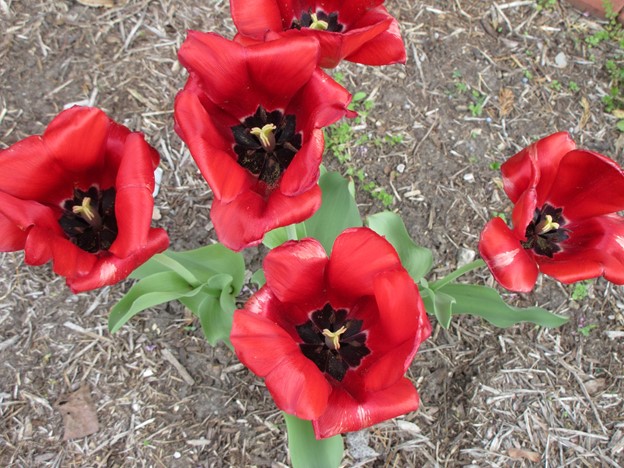
Marie Webster had more than one tulip design for patterns or kits which she sold by mail order from her upstairs bedroom, placed in department stores like Marshall Field in Chicago, or distributed through the shop of another Honoree, Mary McElwain.
Here’s one of Marie’s trade publication showing a graceful arrangement called “Windblown Tulips”, along with an actual quilt in that pattern from our collection.
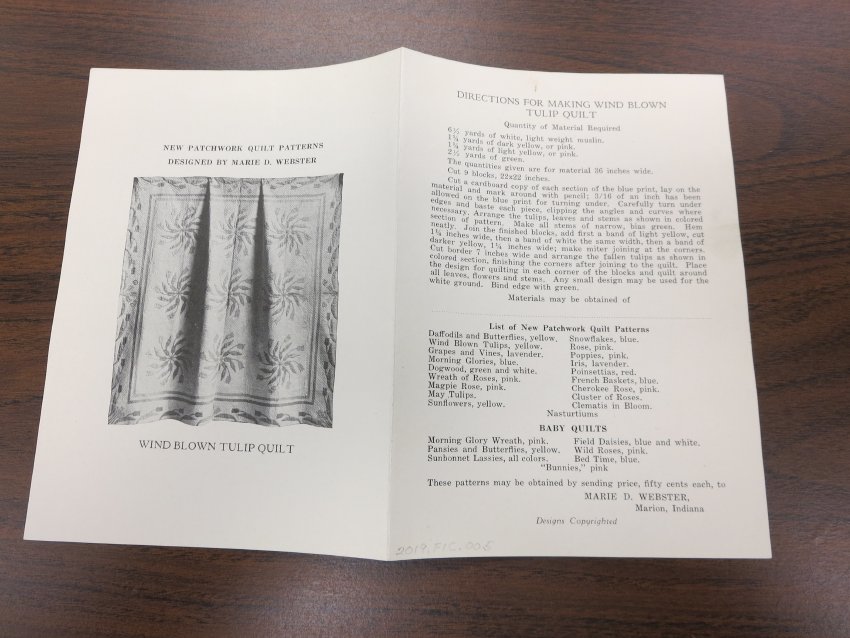
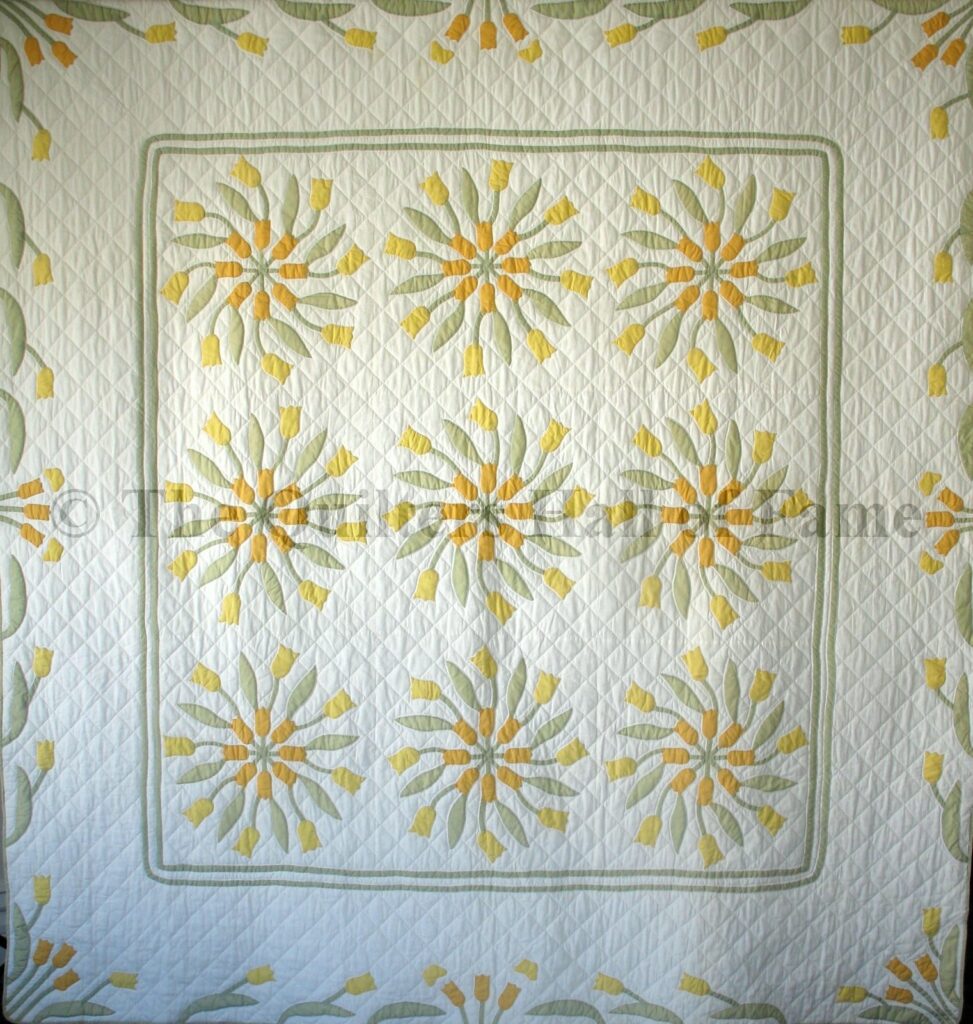
The design looks different in the next quilt—there’s sashing, corner-stone borders, and a variation of the tulips in the borders—but you still get the sense of flowers bending in an early Spring breeze.
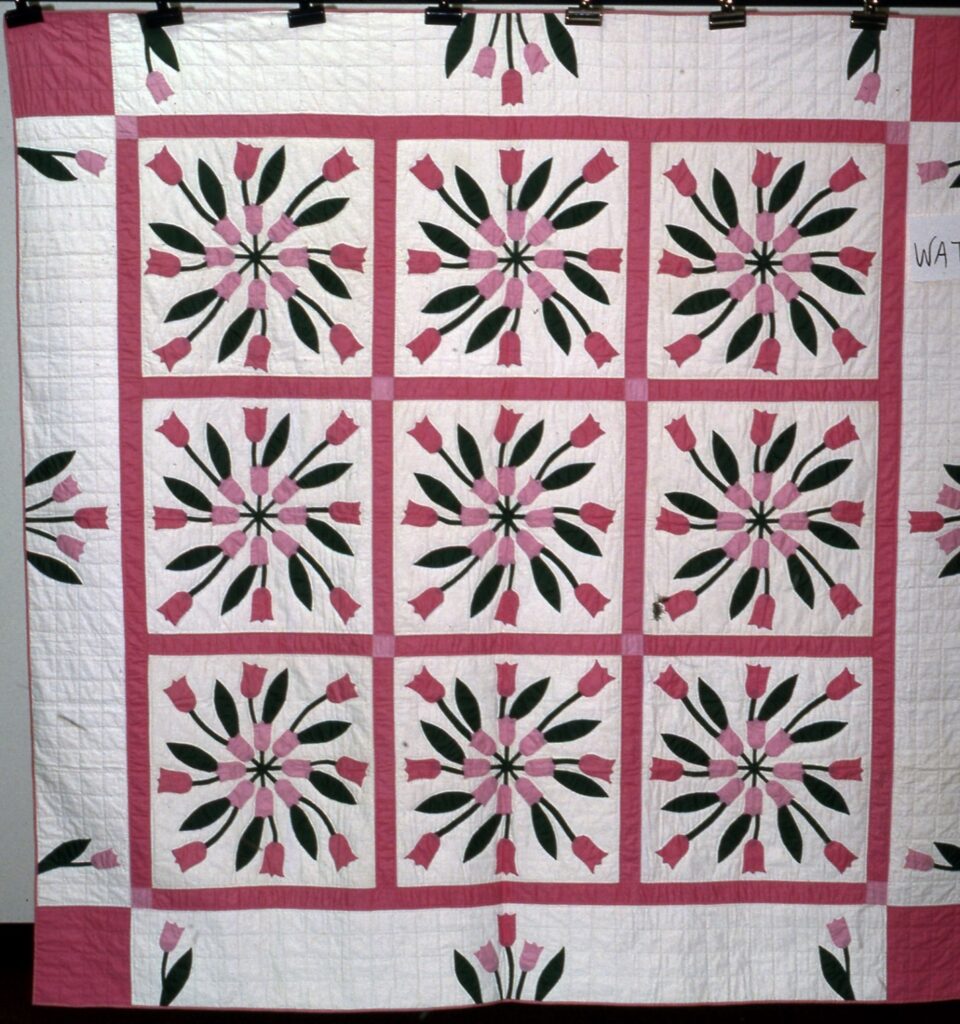
The breezy look disappears in Webster’s “May Tulips”. It’s pure Art Deco, and would have been so “on trend” when it first came out.
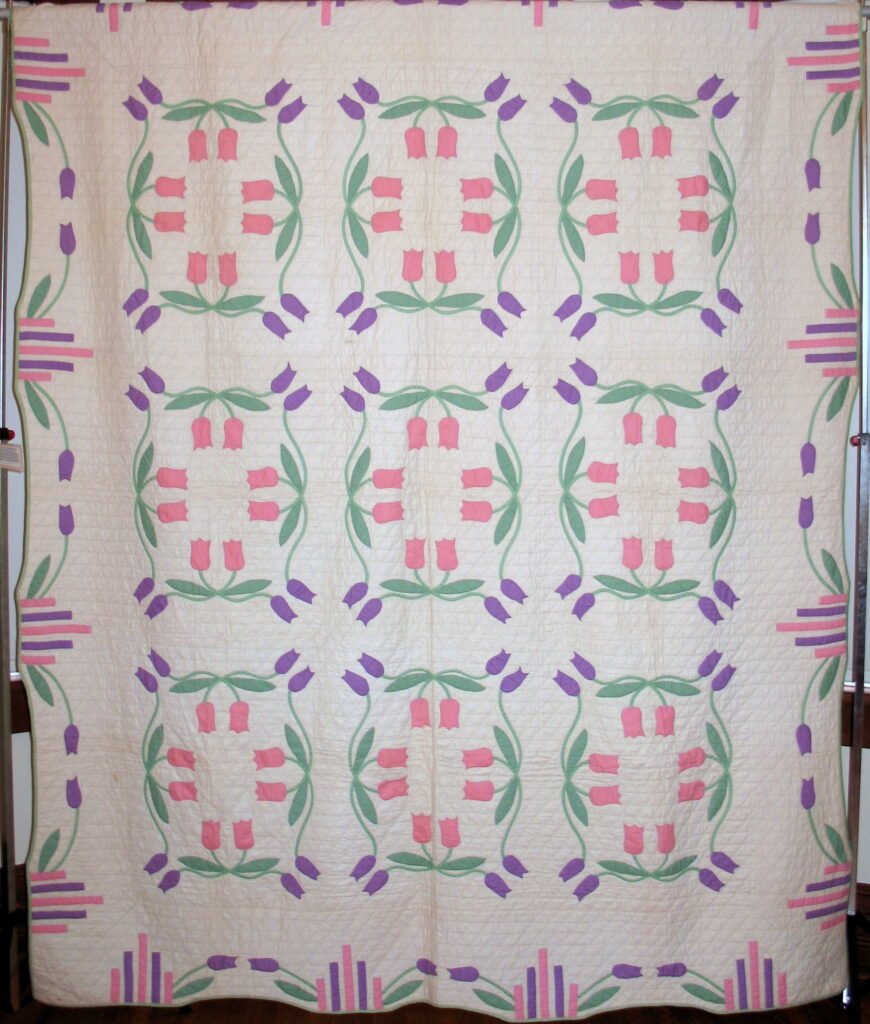
In the 1930s-50s, Honoree Mary McElwain operated a quilt shop in Walworth, Wisconsin (in what was then a high-society resort area) and another in swanky St. Petersburg, Florida. Here are two pillow kits from the Wisconsin shop that I just recently cataloged (they’ll be searchable as soon as I can do the data entry). “Dutch Tulip” has the blue border and “Tulip Plant” is in peach.
Dutch Tulip could be repeated to make a bed-sized quilt like this one shown in a trade “card” from another distributor, BOAG Company of Chicago.
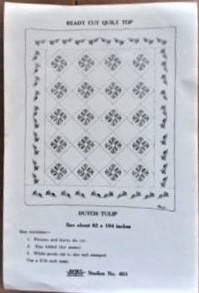
The final McElwain tulip offering we’ll look at borrows an element of movement from Webster although Marie was not the designer; it’s called “Tulip Swirl”. This version really makes a statement, and I think it should have an award for “Best Use of Rick Rack Trim”.
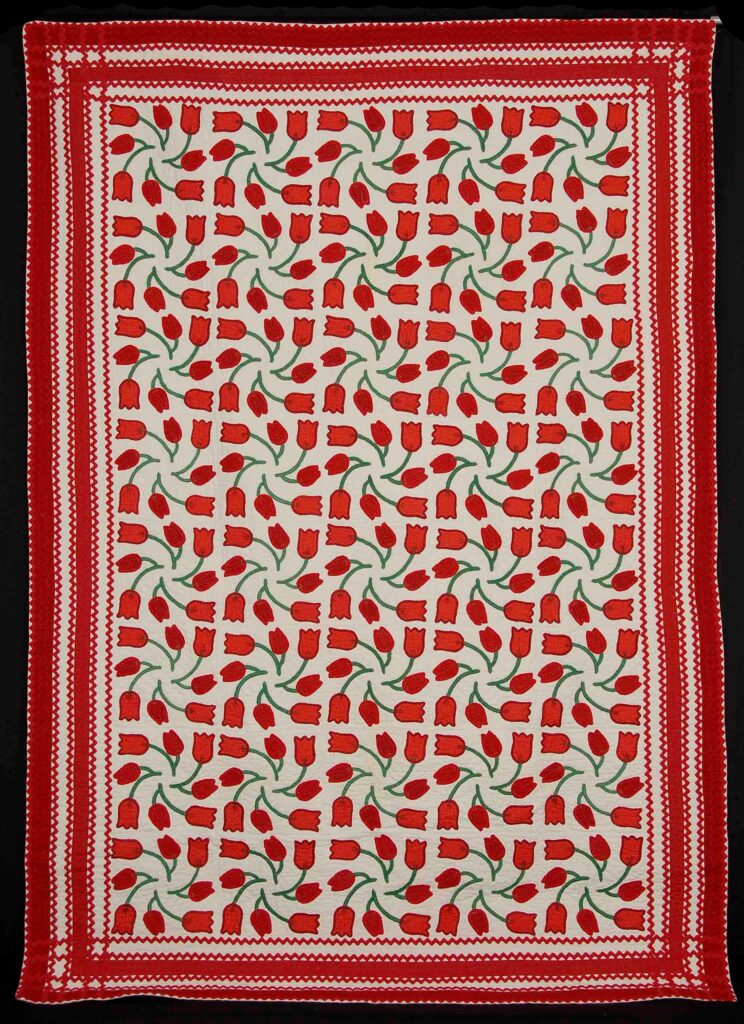
Here are three blocks made by Honoree Mary Schafer. I’m puzzled by the fat stems in the first one (although they make a great secondary daisy), and I wonder about the green petals in the second, but these are all readily identifiable as tulips.
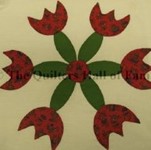
Tulip Festival 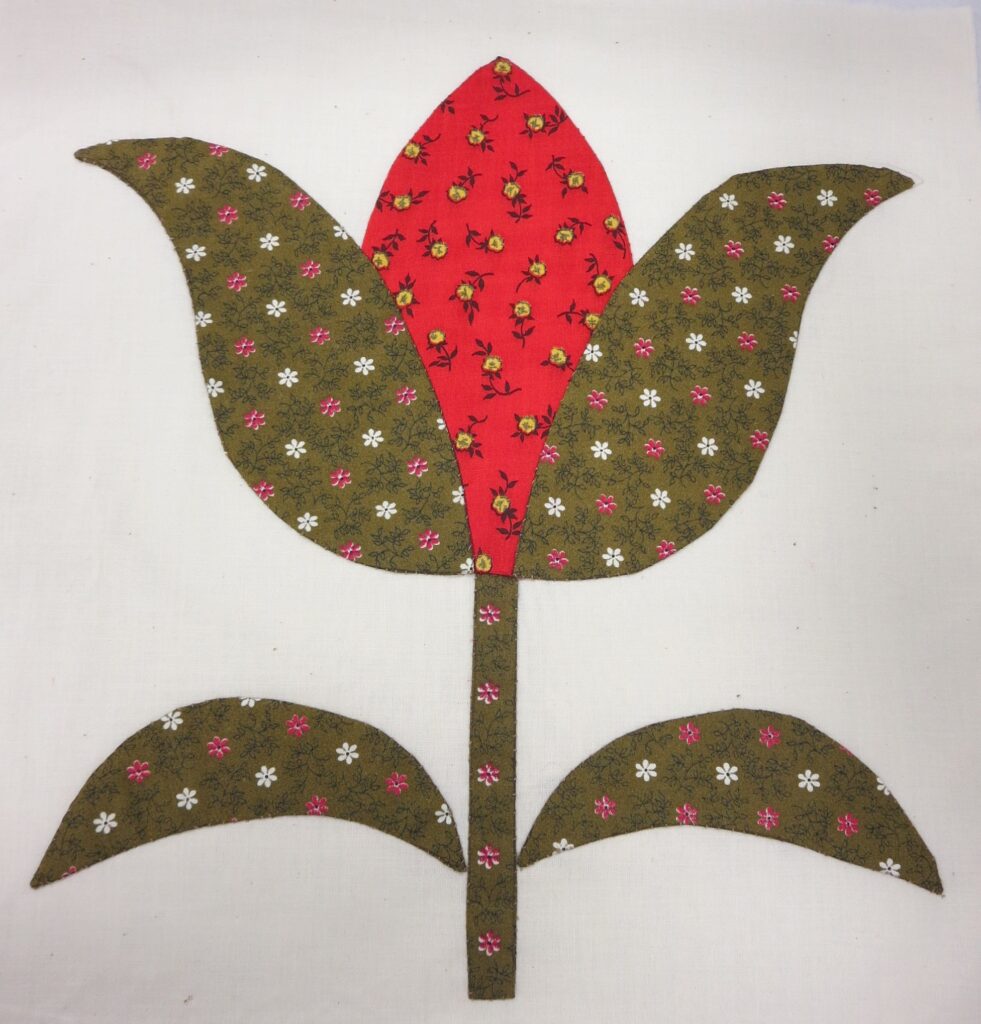
One Tulip Block 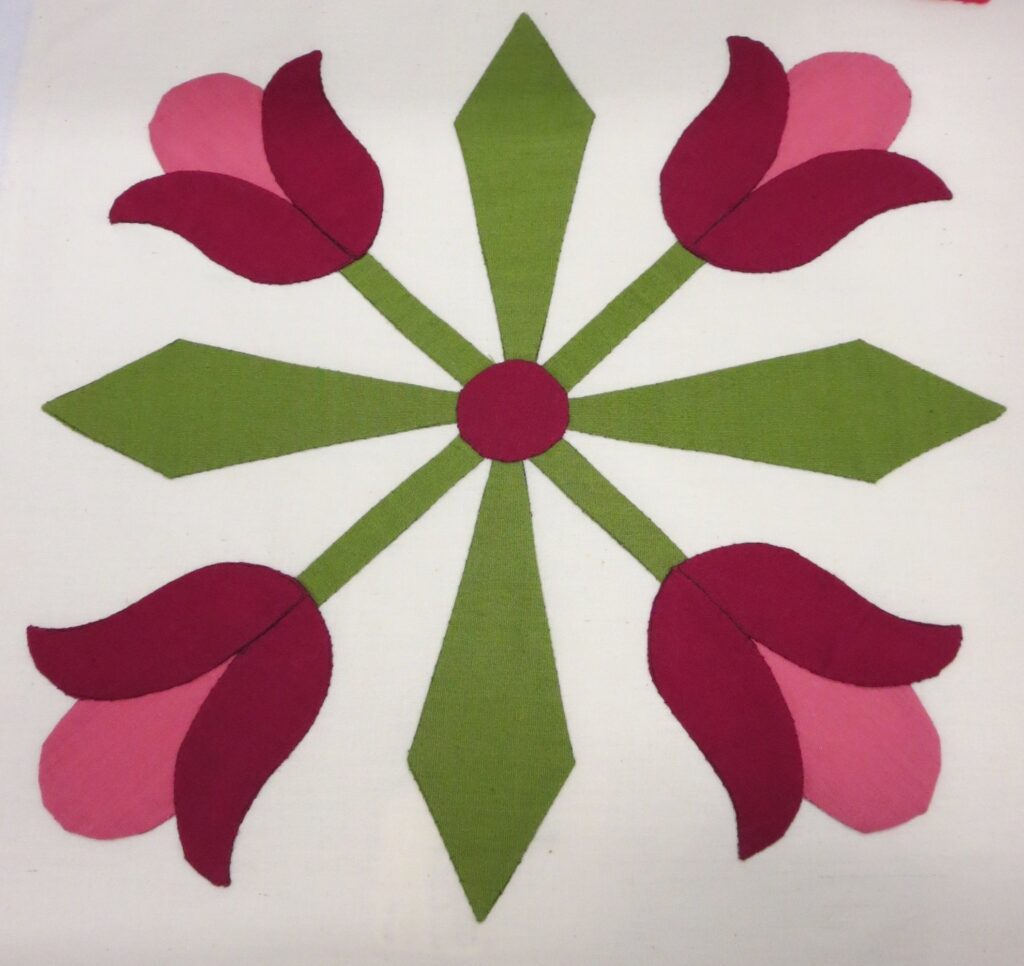
Four Tulip Appliqué
That isn’t always the case. Look at these blocks from the collection of Honoree Cuesta Benberry, who may have acquired them in a round robin exchange. That first one has more of a poppy leaf and I just don’t understand the layers of petals (maybe it’s a parrot tulip). The second makes me think of angel wings and halos. But these are both cataloged as tulip blocks. The last in the group clearly qualifies as a tulip; it’s from Cuesta’s “Always There” quilt.
Honoree Ruby Short McKim did some tulip designs too. The first photo shows the one in her “Flower Garden” quilt, and the second is from her “Flower Baskets”.
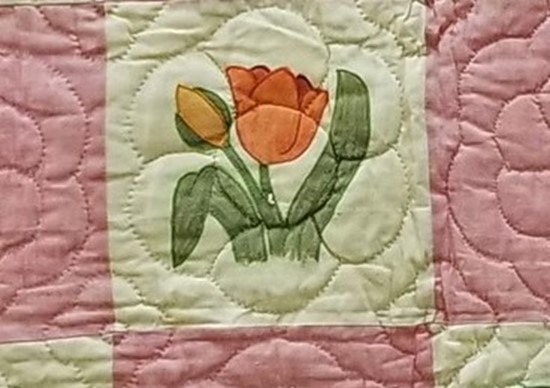
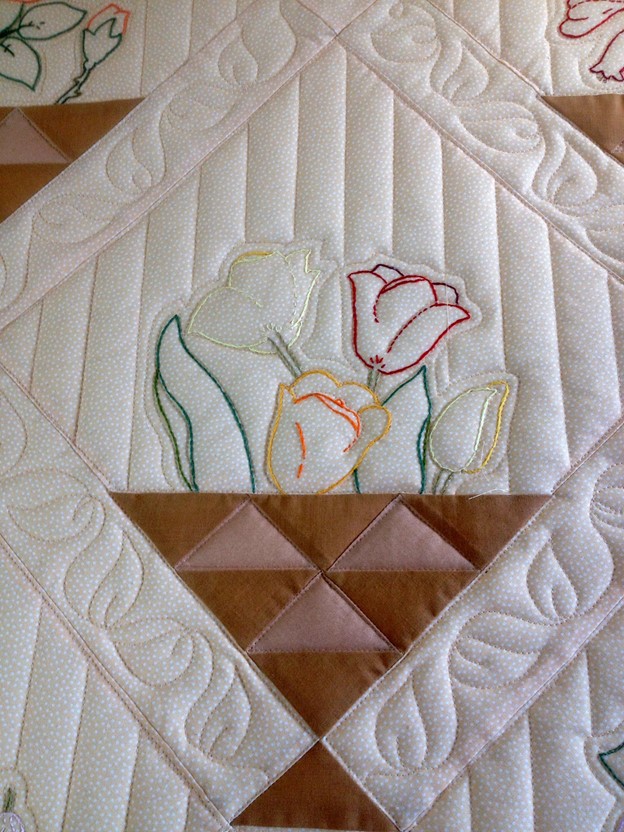
Tulips weren’t just popular as quilt motifs in the 1930s. Here’s one from fifty years before that which was collected by Honoree Mary Barton.
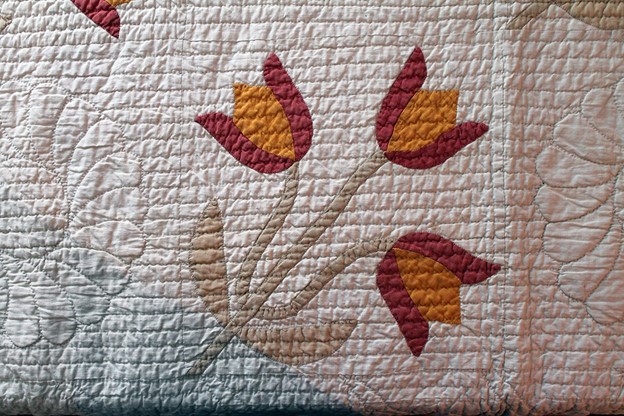
And they continue to be popular as seen in this panel of blocks made from a 2003 pattern in the magazine of Honorees Marianne Fons and Liz Porter. (Okay, the center block has daisies, but I didn’t want to crop.)
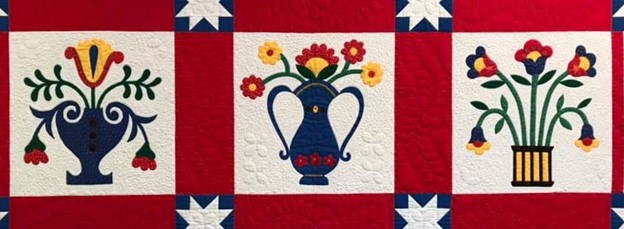
That’s a pretty good romp through the tulips of our Honorees. But wait; there’s more. I’ve put more than one tulip on a quilt myself. These are somewhat stylized—they must be hybrids.
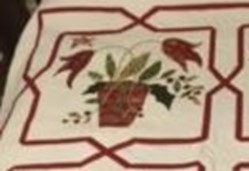
The Quilt Index claims 834 entries under the tulip motif. (Some look more like lilies or roses, but who am I to question?) Lots of those are straight set like Webster’s “Windblown Tulips” and the red McElwain “Tulip Swirl”, but many are grouped in fours. This first one has no leaves and makes your eye jump from the “x” of the actual block to a secondary pattern with a quatrefoil center.
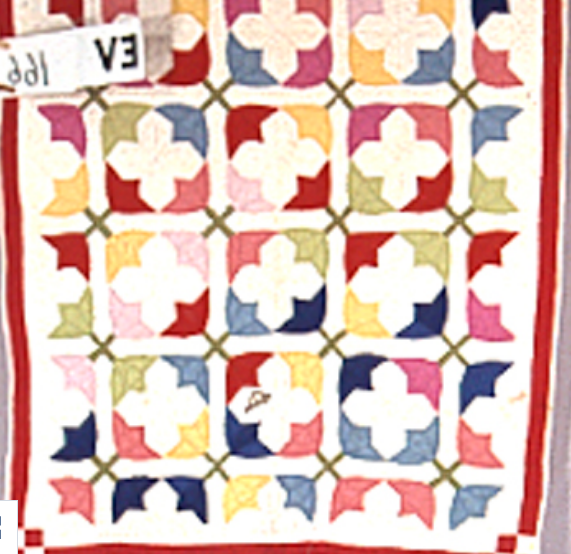
Here’s another layout that fools the eye; the stems of the satellite buds make a hashtag/pound sign design. (Why are those buds round? Unopened tulips are ovoid.)
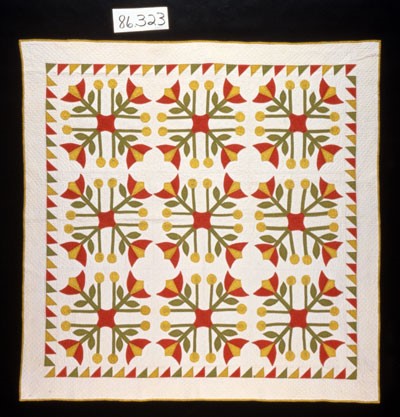
This one has lost its stems and gained a four-lobed center, but it still has that diagonal symmetry that is so pleasing.
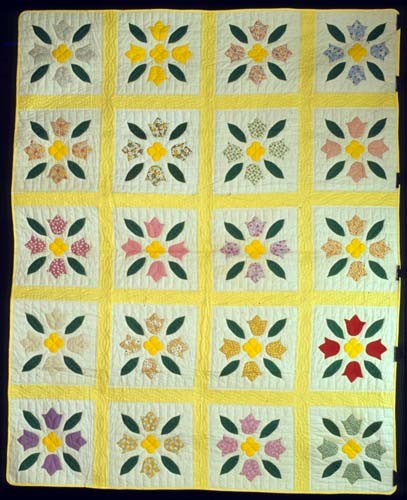
But I’m also pleased with this quilt where symmetry has been ignored. (Dare I say “tossed out”? It does have a nice, tossed appearance.)
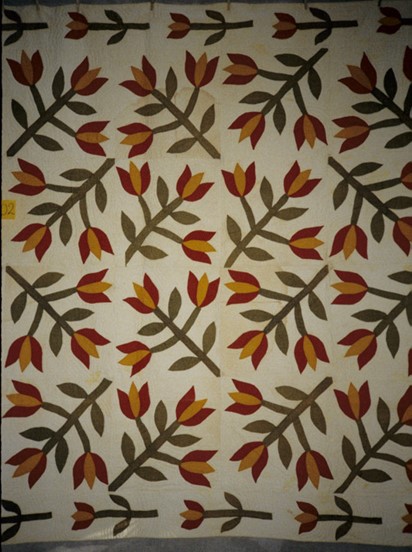
And there’s always someone who is totally unconventional. This quilt has an appealing vining border design and blocks where the stems form a circle instead of a cross.
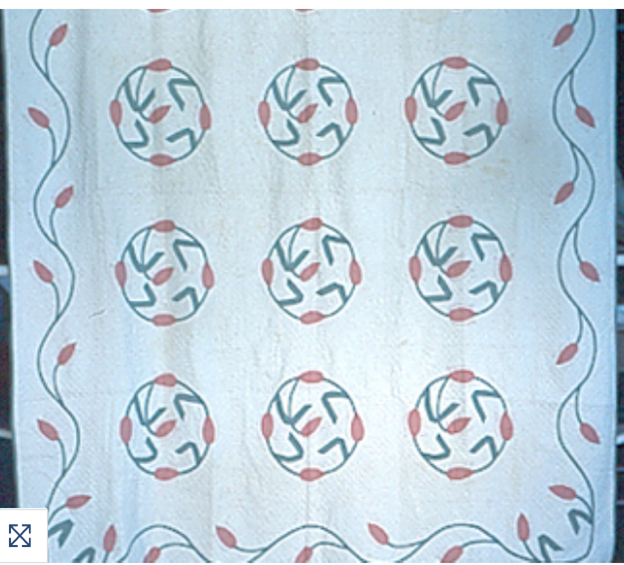
Most of the tulip quilts on the Quilt Index are constructed as blocks, but here’s an unusual medallion setting. The layout is similar to what you see in Webster’s “Poppies” and “Sunflower” (that’s for another day), and the stems have taken on an interesting Art Nouveau curve.
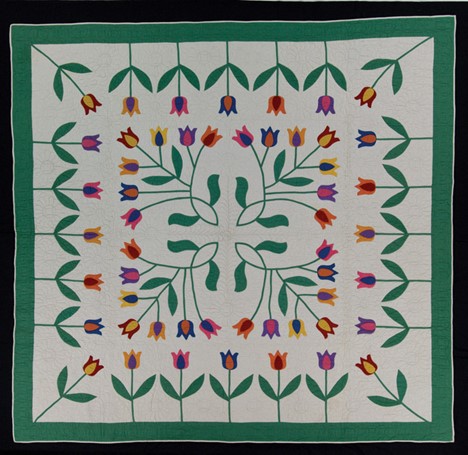
Here are two more curvaceous ones.
And finally, an overall layout from the 1970s. This “first quilt” was made from a quilt kit purchased from Lee Ward’s Craft Company in Illinois.
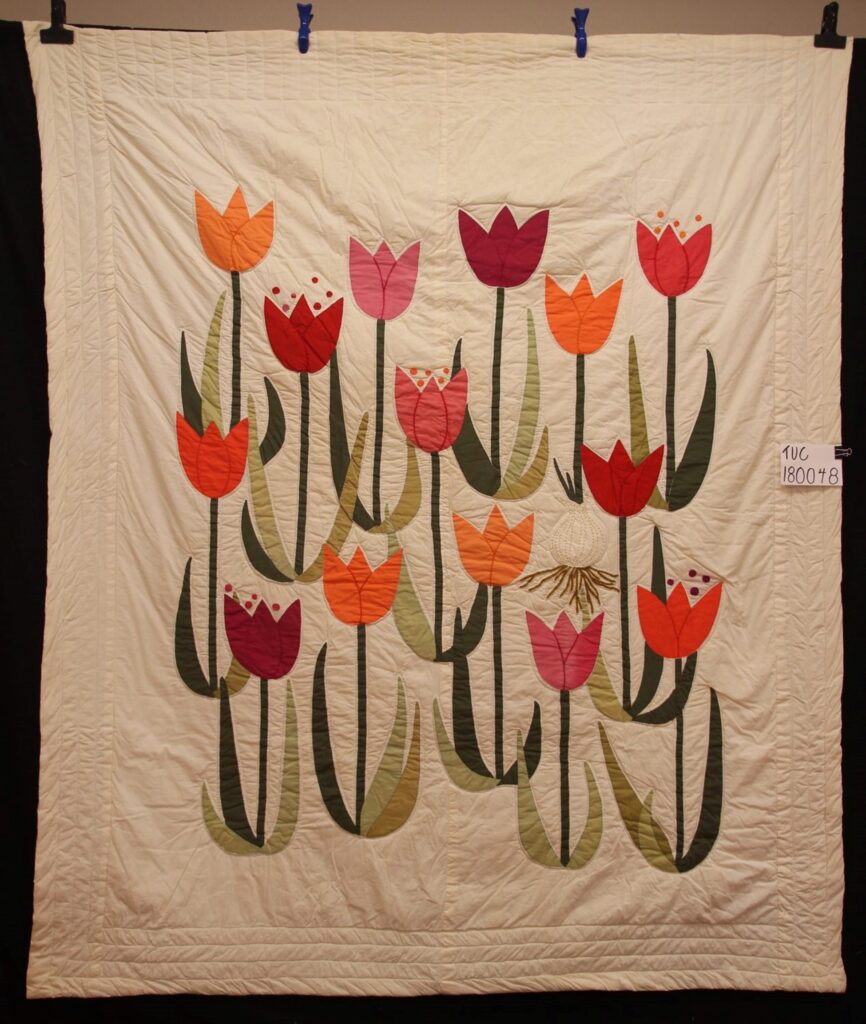
And with that we’ve come full circle from Marie Webster’s kits, so it’s a good place to stop. We never got past the tulips, so before I go, I want to show you Marti Michell’s “Wild Rose”.
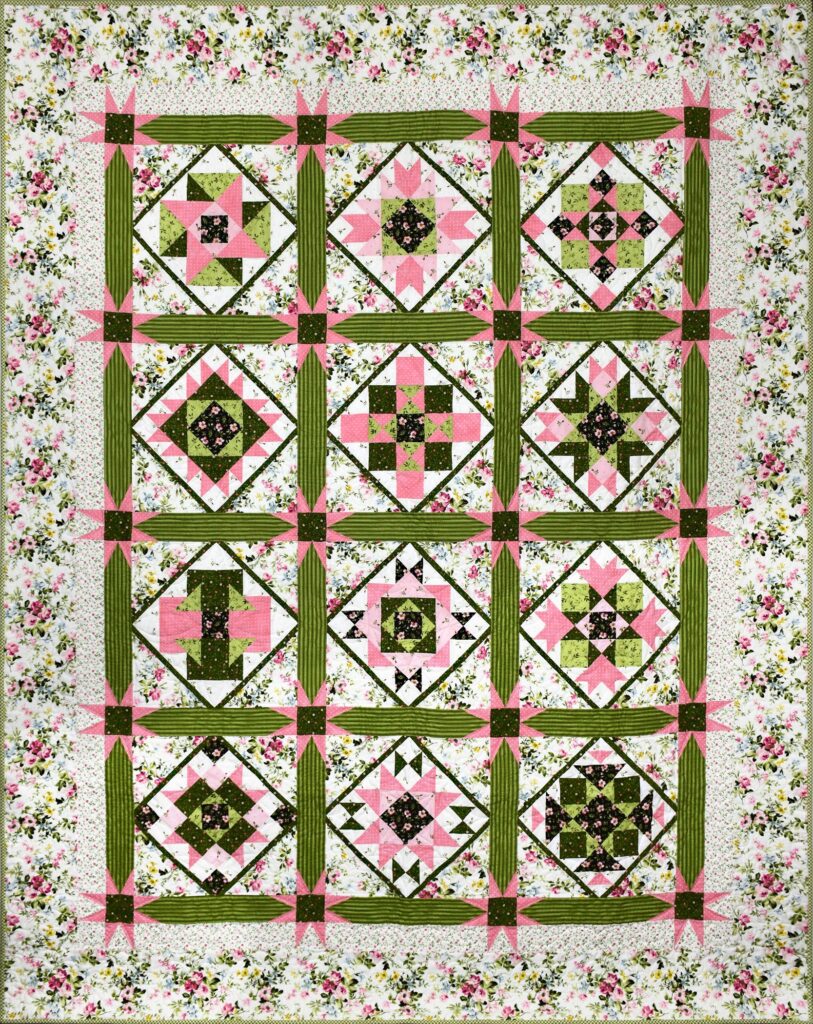
You can consider it a floral teaser for either Celebration or another blog, or maybe for both.
Your quilting friend,
Anna
French language. http://www.bbc.com/travel/story/20181104-why-the-french-dont-show-excitement
Quilt Index Gasperik quilts. https://quiltindex.org/view/?type=artists&kid=18-47-2
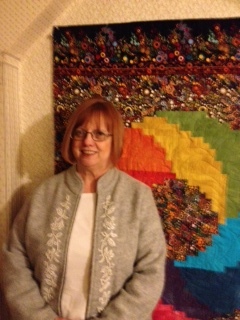
I’m Anna Harkins, and I volunteer on the Collections Committee at The Quilters Hall of Fame. What else would you like to know about me? Married, no kids; one old horse, retired, and live in a western suburb of Chicago. I’ve been quilting for about 20 years (I wish I could say I learned from my grandmother, but some of us come to this later than others), and I’m a quilt history dilettante, “a person who cultivates an area of interest, such as the arts, without real commitment or knowledge.” There are real scholars among you, and I have no pretensions to that level—hats off to you! But I am interested, especially in the people who have made up the quilt world here in the US, which is why I’ve agreed to blog for The Quilters Hall of Fame. I plan to write every week, and I hope you’ll join the discussions.


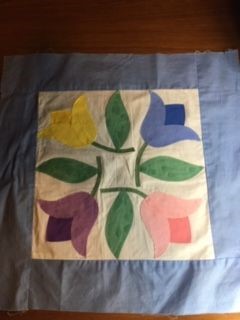
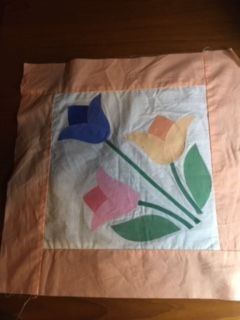
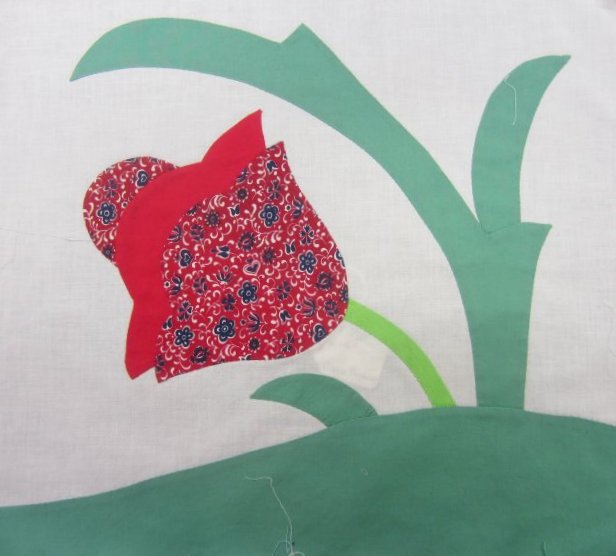
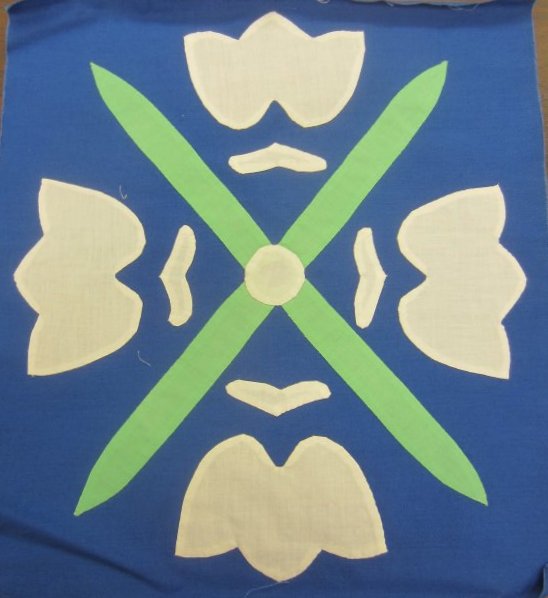
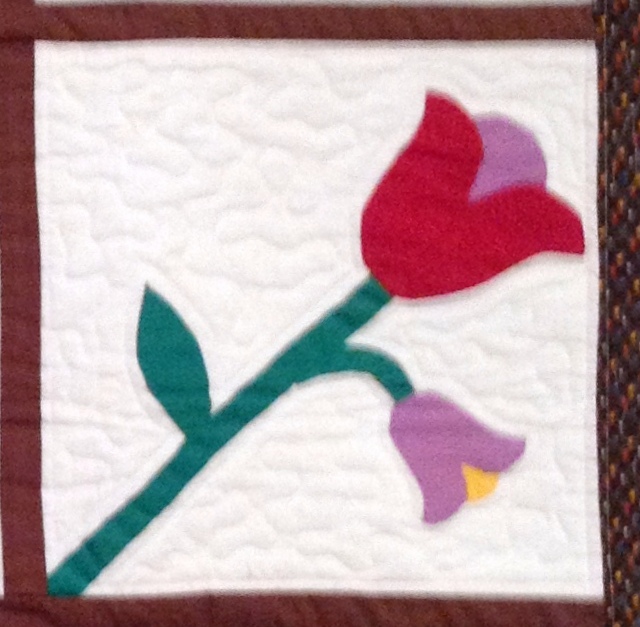
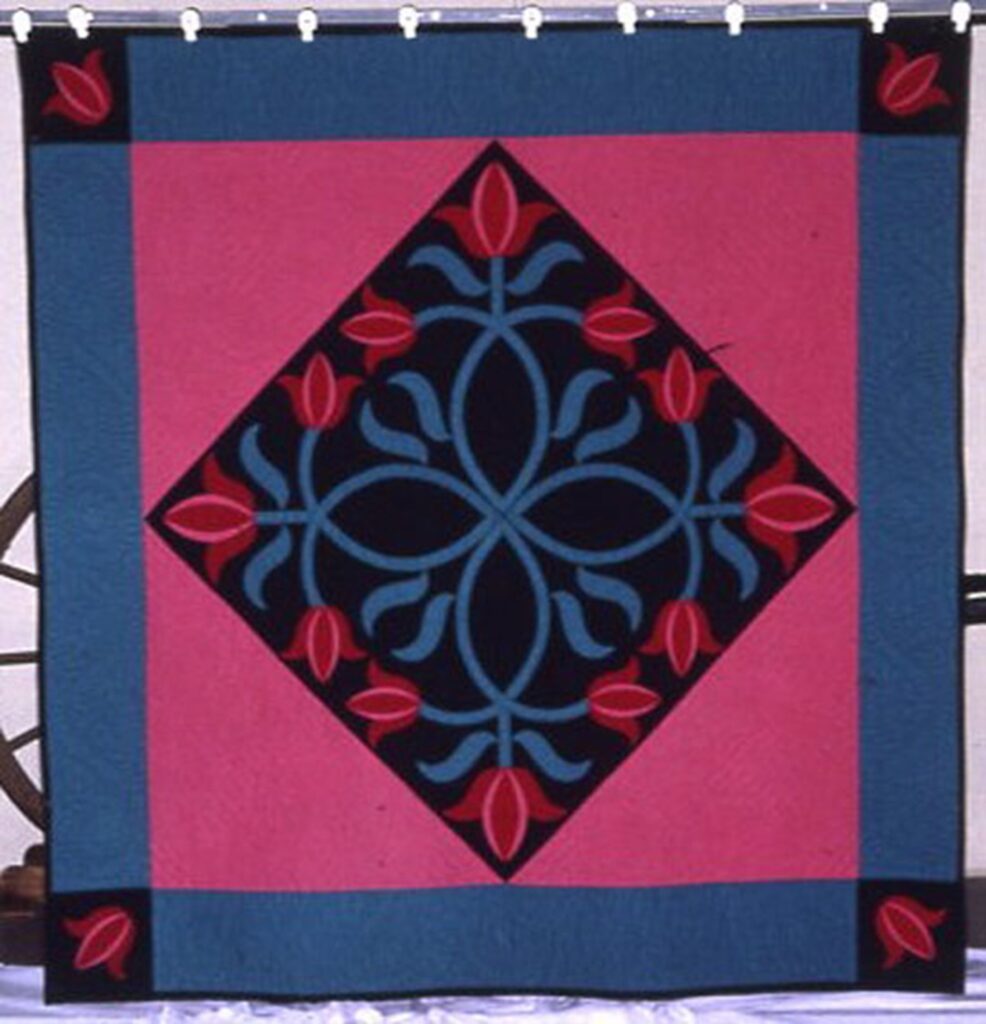
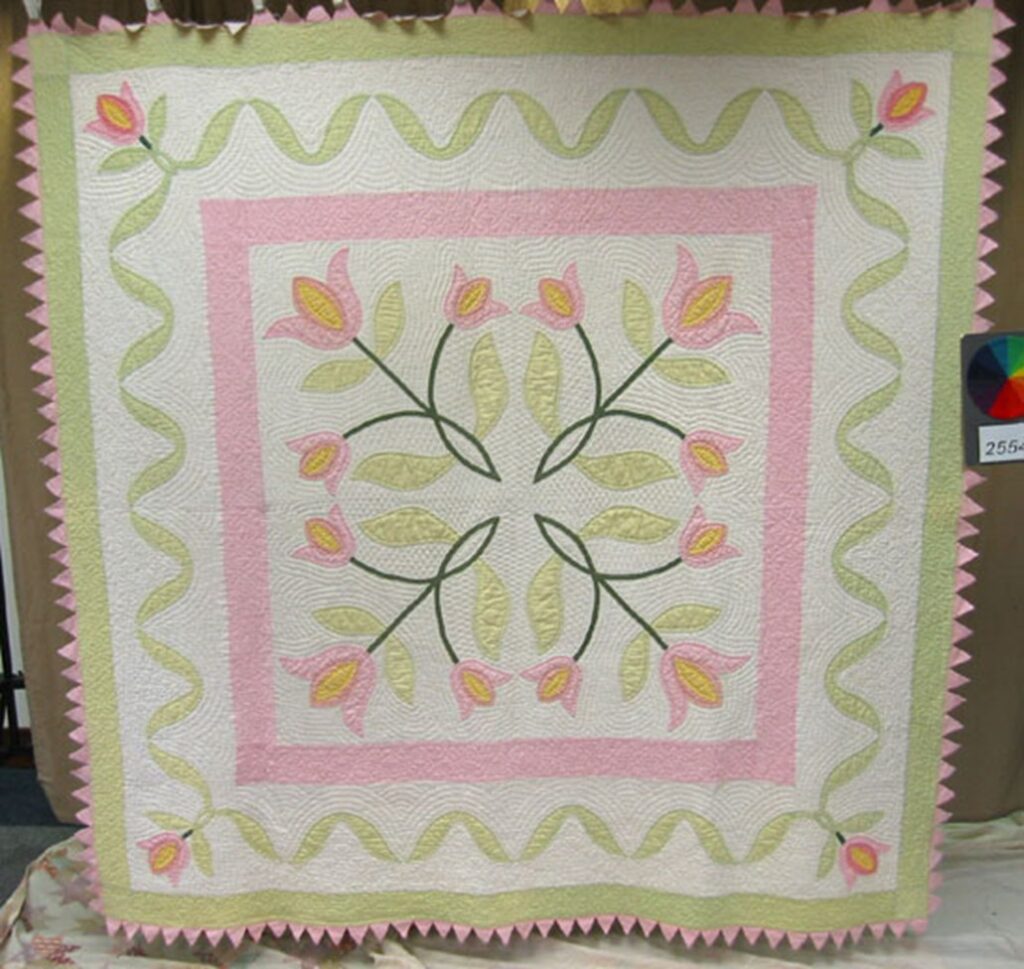
Wow! What fun to see such an array of tulip quilts ! Thanks for taking us on a journey through so many designers and connecting them to QHF honorees.
Loved your blog this issue. It was nice to see you again at TQHF last week. Come again soon!